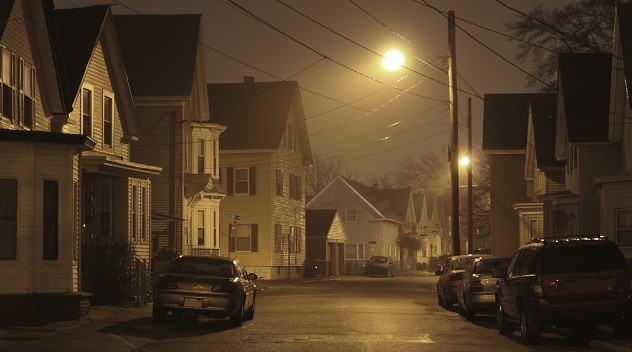 Movies and TV
Movies and TV  Movies and TV
Movies and TV  History
History 10 Momentous Events That Also Occurred on July 4th
 Animals
Animals 10 Times Desperate Animals Asked People for Help… and Got It
 Movies and TV
Movies and TV 10 Movie Flops That Found Their Way to Cult Classic Status
 History
History 10 Things You Never Knew About Presidential First Ladies
 Movies and TV
Movies and TV 10 Zombie Movies That Will Actually Terrify You
 Humans
Humans 10 Times Scientists Were Absolutely Sure… and Absolutely Wrong
 Our World
Our World 10 Pivotal Moments for Life on Earth
 Movies and TV
Movies and TV 10 Most Realistic Medical TV Shows of All Time
 Creepy
Creepy 10 Eerie & Mysterious Ghosts of the Pacific Coast
 Movies and TV
Movies and TV 10 Music Biopics That Actually Got It Right
 History
History 10 Momentous Events That Also Occurred on July 4th
 Animals
Animals 10 Times Desperate Animals Asked People for Help… and Got It
Who's Behind Listverse?

Jamie Frater
Head Editor
Jamie founded Listverse due to an insatiable desire to share fascinating, obscure, and bizarre facts. He has been a guest speaker on numerous national radio and television stations and is a five time published author.
More About Us Movies and TV
Movies and TV 10 Movie Flops That Found Their Way to Cult Classic Status
 History
History 10 Things You Never Knew About Presidential First Ladies
 Movies and TV
Movies and TV 10 Zombie Movies That Will Actually Terrify You
 Humans
Humans 10 Times Scientists Were Absolutely Sure… and Absolutely Wrong
 Our World
Our World 10 Pivotal Moments for Life on Earth
 Movies and TV
Movies and TV 10 Most Realistic Medical TV Shows of All Time
 Creepy
Creepy 10 Eerie & Mysterious Ghosts of the Pacific Coast
10 Haunting Unsolved Crimes Against Aboriginal Women In Canada
Canada’s aboriginal women are going missing and being murdered at an alarming rate. Earlier this year, the United Nations released a report stating Canadian aboriginal women are five times more likely to die in violent circumstances than non-aboriginal women. The situation is so severe that the UN pleaded with the Canadian government to begin a nationwide inquiry.
Last year, the Royal Canadian Mounted Police (RCMP) released statistics indicating that 1,200 aboriginal women had either been murdered or gone missing between 1980 and 2012. The RCMP concedes these numbers exceed previous public estimates.
On October 19, 2015, Liberal candidate Justin Trudeau was elected Canada’s new prime minister. Since then, he has appointed a new minister to the Ministry of Indigenous and Northern Affairs. Together, they plan to work with the aboriginal community and hold a nationwide inquiry into these murdered and missing women.
10 Freda Goodrunning

Freda Goodrunning was a 35-year-old Cree woman who lived on the Sunchild First Nation reservation in Alberta. Her family described her as someone who was always happy, giggling, and able to make anyone smile.
Unfortunately, Freda was frequently involved with violent, controlling men. She also became addicted to drugs and alcohol. As a result, her six children were taken and placed in permanent foster care. Freda then moved to Edmonton, Alberta, to be near her children. But for the last four years of her life, Freda was homeless, often sleeping in dumpsters and tents.
On June 4, 2014, her body was found dumped in a storage shed behind a closed-down bar. Though an autopsy was performed the next day, police refused to release any information, including her name, age, or description. They even waited two days to notify Freda’s family of her death.
Finally, in October, police ruled her death to be a homicide. She died due to blunt force trauma. In December, police held a press conference to discuss three previously unacknowledged homicides, including Freda’s. However, they refused to answer any questions and kept all information confidential in order to assist the investigation. Since then, no additional details have been released about Freda’s death, and no one has ever been charged.
9 Jennifer Catcheway
In June 2008, Wilfred and Bernice Catcheway of Portage la Prairie, Manitoba, arrived home to find a note from their daughter, Jennifer, explaining that she was going to see her cousin. A few days later on June 19, Jennifer called her mom to say she would return home that evening, in time for her 18th birthday party. That was the last time Bernice ever heard from her daughter.
When Jennifer failed to return home, her parents were not initially worried, thinking Jennifer was just out celebrating. But after a few days, with no word from Jennifer, her parents went to the Winnipeg police department. According to the Catcheways, the police didn’t take them seriously. They told them to give it a week because their daughter was probably just “on a drunk.” The Catcheways spent the next couple of weeks looking for their daughter and trying to get the police to investigate. The RCMP Major Crime Unit and Serious Crime Unit finally became involved in July.
A police investigation determined that Jennifer had made it to her cousin’s home in Grand Rapids, about six hours away from the family home. There were reports that Jennifer was seen at a house party on the Dakota Tipi First Nation. The last sighting of Jennifer was on June 19 in Grand Rapids when witnesses saw her getting into a truck. A ground search was performed, and a helicopter was brought in to assist. Unfortunately, they were unable to locate Jennifer. Police arrested Jennifer’s uncle and cousin, but both were released without charges.
In October 2015, a new witness came forward with information leading the Catcheways and police to think Jennifer’s remains were located at the Dakota Tipi First Nations. They received permission to search the area, but so far, they’ve found nothing. The family says they will continue searching until winter and then resume again in the spring. They are currently offering a $10,000 reward to anyone who finds Jennifer.
8 Simone Sanderson

In the months leading up to her death, Simone Sanderson’s life quickly spiraled out of control. The 23-year-old, who lived on the O-Chi-Chak Ko Sipi First Nation in Manitoba, recently had her son taken from her. Child and Family Services (CFS) placed the boy in the care of his grandparents and ordered Simone to attend several programs, including a month-long stay at a detox facility.
After completing treatment, CFS still found Simone unfit to care for her son, and he remained in his grandparents’ custody. Simone then became involved with a new boyfriend and started using drugs again. She slowly distanced herself from her family.
On August 26, 2012, Simone’s family reported her missing. Her body was discovered at an old car lot in Winnipeg on September 2. A few days later, police revealed they were treating the case as a homicide, but they refused to release the cause of death. During their investigation, police revealed Simone was involved in the sex trade, using Facebook to contact clients. However, her family denies these accusations.
In 2013, Simone’s family gave police a license plate number that allegedly belonged to the car she was last seen getting into. According to Simone’s grandmother, Betty-Ann, police never followed up on the lead. The family still holds vigil for Simone and tries to keep the media interested in her case. But while they try to keep pressure on the authorities, the last time the police contacted them was January 2015.
Sadly, Simone’s mother passed away in 2014, never learning what happened to her daughter. Betty-Ann is hoping a national inquiry will finally reveal what happened to Simone and lead to the arrest of those responsible for her granddaughter’s death.
7 Angela Poorman

Angela Poorman led a troubled life. The 29-year-old grew up on the Kawacatoose First Nation in Saskatchewan where she lived with her aunt and cousin. She spent her teenage years with her mother, but as an adult, Angela struggled with alcohol addiction. She had multiple criminal convictions, including identify theft and driving while impaired. She was also the victim of domestic abuse. Her three children were eventually removed from her home.
In 2014, Angela was trying to turn her life around. She was working on getting her high school diploma and trying to get her children back. On the morning of December 14, 2014, a passerby found Angela lying on the side of the road. She’d been stabbed multiple times. She was rushed to the hospital where she later died.
Though police launched an investigation, they revealed very little about the case. Angela lived in Winnipeg’s Minto neighborhood, but she was found in one of the city’s worst areas. Police refused to reveal why she was in that spot. They wouldn’t say if robbery was a factor in her death or if she was involved in the sex trade (which is common in that section of the city). Angela’s mother, Janett, has contacted the police several times, but she’s received little help or information.
Under Manitoba’s Victims’ Bill of Rights, the Compensation for Victims of Crime program offers up to $5,400 to help families cover funeral expenses. Unable to pay for her daughter’s funeral, Janett applied but was denied due to Angela’s criminal record.
6 Misty Faith Potts
Misty Faith Potts grew up on the Alexis First Nation in Alberta. Her family describes her as kind, giving, and compassionate. A role model to her younger sister, Misty was a bright girl who earned a masters degree in environmental studies.
Misty’s troubles began in 2011 after the death of her brother. She separated from her husband and began using marijuana. She was soon abusing prescription medication and finally became addicted to methamphetamine. However, her husband retained custody of their son. Misty returned home to get help for her drug addiction. Though her family was hopeful, they believed she was still using and hanging out with drug dealers.
In February 2015, Misty left home. That was the last time her family saw her. The 37-year-old was last seen in March, getting out of a vehicle on Alberta’s Highway 43. Her sister, Eva, says police didn’t take Misty’s disappearance seriously. They were slow to react and follow up on any leads. A new RCMP constable has since been assigned to the case. The family says he is thoroughly investigating Misty’s disappearance, but they wonder if she would’ve been found by now if the police had initially taken her disappearance seriously.
5 Melanie Dawn Geddes

Melanie Dawn Geddes was born in Lestock, Saskatchewan. She was the youngest of four children and was described by her mother as a happy, determined woman who’d help anyone in need. Melanie grew up on George Gordon First Nation in Saskatchewan. After her parents divorced, custody was split so Melanie spent half her time living in nearby Regina.
In high school, she met Eric Cleveland. The two fell in love and became inseparable. After graduation, she worked hard to put herself through school to further her education. Melanie and Eric moved in together and eventually had three daughters, whom Melanie adored and doted on.
In August 2005, Melanie’s mother and stepfather were staying with the couple at their residence in Regina. On the evening of August 12, 24-year-old Melanie wanted to celebrate her new job by going to a house party with her sister. Eric had been out with friends, and when he came home later that night, he found that Melanie had not yet returned from the party. Thinking she was just staying out later than usual, he and his in-laws went to bed.
In the early hours of August 13, Melanie left the party on foot to walk the four blocks home. She was never seen again.
The family contacted the police to report her missing. For weeks, the police, family, and community members put up missing posters and searched for Melanie, all to no avail. In December, four months after she went missing, remains of a woman were found in a field north of Regina. DNA testing confirmed the remains were Melanie’s.
Though the police are treating the case as a homicide, they have not released any information, including the cause of death. There are no known suspects in this case, and updates have not been provided.
4 Leah Anderson
Leah Anderson and her siblings had a very difficult childhood. Her father was murdered in 2003, when Leah was just six. Shortly thereafter, her mother became addicted to drugs and alcohol. The children were removed from her care and placed in foster homes. In 2005, the children’s aunt and uncle were awarded custody. They moved to God’s Lake Narrows, a Cree First Nation reservation in Manitoba. The reservation is so remote that it can only be accessed by air in summer and by ice road in winter.
On January 4, 2013, 15-year-old Leah left home to go ice skating with a friend, telling her aunt she would be back by curfew. Leah would never make it back home. Her body was discovered two days later on a snowmobile trail. She was beaten so badly that it was first thought she’d been mauled by dogs.
Within hours, the RCMP was on the scene and treating the death as a homicide. Leah’s family was hopeful the investigation would be resolved quickly since the road she was found on was closed. This meant her killer had to be in the community of only 285 homes. But after investigating for just a few days, the RCMP left the area and have returned only a few times since.
Though police remain tight-lipped about the case, CBC News traveled to the remote location to do their own investigation. That’s when they learned the local rumor that Leah attended a house party on the night she disappeared. In fact, her boyfriend said he went to the party to get Leah that night, but he wasn’t allowed inside. The homeowner denies that Leah was there.
CBC also spoke with a witness who doesn’t want her name revealed. She said that a few months after Leah’s body was found, a man by the name of Steven Chubb confessed that he’d murdered someone. CBC located Steven, and while he admitted to confessing, he said he was just kidding around. He further stated that the RCMP had brought him in for questioning, and he’d passed a lie detector test.
In July 2014, the RCMP took DNA samples from Steven and several other community members. They haven’t disclosed the results of those DNA tests or released any other information. There is currently a $10,000 reward for any information leading to an arrest.
3 Maisy Odjick And Shannon Alexander
Sixteen-year-old Maisy Odjick lived with her grandmother in Kitigan Zibi Anishinabeg Nation in Quebec. Her best friend and cousin, 17-year-old Shannon Alexander, lived in nearby Maniwaki. The two girls were very close, with Maisy often spending the night at Shannon’s. The teens would stay up late, watching movies, gossiping, and talking about boys.
On September 5, 2008, Maisy went over to spend the night at Shannon’s. The girls were excited about going to the school dance that evening. When Shannon’s father returned home, the girls were not there. However, he found their purses which contained their wallets and IDs. Shannon had also left her medication. Fearing the worst, her dad contacted the police to report the girls were missing.
The families of the teenagers say the police mishandled the investigation from the beginning. The only information anyone could ascertain was that the girls had arrived at the dance and were last seen leaving together. The frustrated families also say the police treated the case as though the girls were runaways.
According to the families, the police never searched the Alexander apartment or provided anyone with a file number. They even refused the help offered by the RCMP. Realizing they were getting nowhere with the cops, the families took matters into their own hands. Maisy’s aunt created a website about the girls’ disappearance. Plus, the reservation chief held a local press conference. Without any police help, they began searching for the girls. A month after the disappearance, the police finally notified the public about the missing teenagers.
In 2009, the Surete du Quebec provincial police force was put in charge of the investigation. The families say the lead investigator is in constant contact with them. Even if he has nothing new to report, he often calls them to say he’s still working on the case.
2 Tina Fontaine
Tina Fontaine of Sagkeeng First Nation was in the care of Child and Family Services when she disappeared on August 9, 2014. The 15-year-old had a history of running away from foster homes.
On August 7, Tina was seen sitting outside a convenience store in Winnipeg, Manitoba. An anonymous witness nicknamed Katrina saw Tina and became concerned when she noticed the teenager’s busted lip.
Katrina introduced herself, and the two talked for a bit. Tina confided in Katrina that she’d run away from foster care. Katrina took her to an emergency shelter, but Tina refused to stay so the girls left. Tina then got into a truck with two guys. Katrina became worried and flagged down a passing police car. The officers stopped the truck and told Tina to get out. The police then let her go.
The following day, Child and Family Services was called, and Tina was placed in a hotel for the night. Once again, she ran away. Later that evening, Tina and Katrina met up and hung out for a few hours. The last Katrina saw of Tina was when the teenager left with a man who solicited her for sex.
Tina was reported missing on August 9. Her body was found eight days later in the Red River, close to Alexander Docks. Her body had been wrapped in a plastic bag. Police ruled the death a homicide, although they won’t say how the teen died.
Unlike other missing or murdered aboriginal women, Tina’s murder garnered media attention in Canada, causing a public outcry. Liberal leader Justin Trudeau also commented publicly about the young girl’s death, saying a national inquiry was necessary.
Despite these efforts, the case went cold . . . until a 53-year-old man named Raymond Cormier was arrested in December 2015 and charged with second-degree murder. Evidently, Raymond knew Tina, but at the moment, their relationship is unclear. However, as the lead investigator put it, “There was definitely some exploitation going on, and not just by [the] accused here but several other people.”
1 Teresa Robinson
On May 5, 2015, 11-year-old Teresa Robinson left home to attend a birthday party. When the little girl failed to return home, her family and members of the Garden Hill First Nation in Manitoba began a search. On May 11, her family contacted the RCMP to report Teresa missing.
Her partial remains were found later that day. It was initially thought the young girl had been mauled by a bear. But after an autopsy, police said they suspected foul play and were now treating the death as a homicide. They confirmed that while animals did disturb the remains, they were not the cause of Teresa’s death. No other information has been released.
Teresa’s family continued searching for the rest of the little girl’s remains. Members of several First Nation communities from Manitoba and Ontario showed up to assist the family. In June, volunteers began searching the water. So far, they’ve been unable to find the rest of Teresa’s body. However, the case is still open, and the RCMP considers it a priority. Family and volunteers say they will continue looking for as long as it takes.




![Top 10 Haunting Images Of Historic Tragedies [DISTURBING] Top 10 Haunting Images Of Historic Tragedies [DISTURBING]](https://listverse.com/wp-content/uploads/2020/05/33758v-150x150.jpg)



